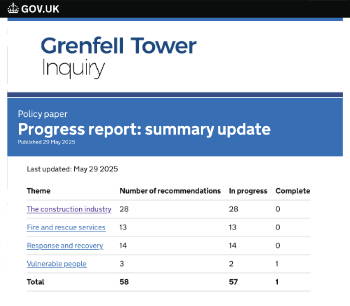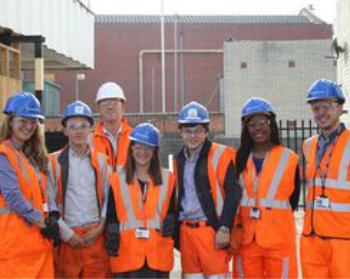ICE calls for three-point plan for more effective infrastructure

|
| The identity of the next government might well be uncertain, but regardless of which party or coalition takes up the mantle on 13 December 2019, it must do so with a clear plan for the UK’s infrastructure. This article sets out three clear steps that the new government must take to ensure that our society is able to benefit from the very best infrastructure networks. Image: Public Domain Pictures/Pixabay |
[edit] Introduction
Infrastructure investment is a means to an end and never an end in itself. Investment delivers outcomes for the public, it supports a higher quality of life, helps with mitigation and adaption to climate change and improves the competitiveness of the UK economy within an international context.
The Institution of Civil Engineers (ICE) wants to see the next government delivering on these ambitions by doing the following:
[edit] 1. Publish a national strategy for infrastructure
This is a strategy that must be long-term, joined-up and based on the evidence produced by the National Infrastructure Commission. This will ensure the UK is well placed to tackle head-on the challenges faced right across the country, be it increasing urbanisation, mitigating the effects of climate change or investing to create sustainable places for people to live, work and play.
ICE’s view on what should be included in such a strategy is outlined here.
[edit] 2. Take a bold approach to deliver on the legislated net-zero by 2050 greenhouse gas target
While the initial vote was historic, this will pale into insignificance compared to the brave and historic trade-offs that will be required to get us to net-zero greenhouse gas emissions by 2050.
ICE is dedicating its State-of-the-Nation next year to outlining the key steps that can be taken to lock-in a trajectory towards net-zero – both for government and industry alike.
ICE recently held a presidential roundtable looking at some of the challenges and opportunities in delivering this target. The previous ICE Future Leader, Alex Backhouse, attended the session and captured his thoughts in this blog.
In addition, our insight paper explores the role of the infrastructure sector in contributing to the 2050 greenhouse gas (GHG) emissions net-zero target, including the range of options for effecting change.
[edit] 3. Focus on improving the delivery of infrastructure projects and increasing productivity across the built environment sector.
There are a number of technologies and approaches that can be readily adopted across the built environment sector.
These include common sense steps to reduce the gap between forecasts and outturns for major projects, greater use of offsite construction for manufacturing, increasing the use of digital solutions to improve productivity and supporting industry-led efforts to adopt the principles of Project 13.
Government, as a major client, has a leading role to play in driving these changes. The next one should take a more robust approach to making them happen.
The adoption and delivery of this three-point plan will improve infrastructure provision across the UK and, as a consequence, drive economic growth, protect our natural environment and improve living standards for all.
[edit] Follow ICE’s analysis of the key party manifestos
ICE will be publishing analysis on this blog following the release of the party manifestos,3 looking closely to see which of the key policy asks that we have developed with members have been adopted.
To contact ICE’s policy and public affairs team, email [mailto:policy@ice.org.uk policy@ice.org.uk].
[edit] About this article
This article was written by [mailto:policy@ice.org.uk Chris Richards], ICE Head of Policy and Public Affairs. It was previously published on the ICE website in November 2019 and can be accessed HERE.
More articles by ICE on Designing Buildings Wiki can be accessed HERE.
[edit] Related articles on Designing Buildings Wiki
- Brexit - The case for infrastructure.
- Civil engineer.
- Community infrastructure levy.
- Government construction and infrastructure pipelines.
- Green infrastructure.
- Growth and Infrastructure Act.
- Hyperloop
- Infrastructure and Projects Authority.
- Infrastructure UK (IUK).
- Infrastructure nationalisation.
- London infrastructure plan.
- National Infrastructure Pipeline.
- National Infrastructure Plan.
- Nationally Significant Infrastructure Projects.
- Railway engineering.
- Smart cities.
- Traffic and transport.
Featured articles and news
Architects, architecture, buildings, and inspiration in film
The close ties between makers and the movies, with our long list of suggested viewing.
SELECT three-point plan for action issued to MSPs
Call for Scottish regulation, green skills and recognition of electrotechnical industry as part of a manifesto for Scottish Parliamentary elections.
UCEM becomes the University of the Built Environment
Major milestone in its 106-year history, follows recent merger with London School of Architecture (LSE).
Professional practical experience for Architects in training
The long process to transform the nature of education and professional practical experience in the Architecture profession following recent reports.
A people-first approach to retrofit
Moving away from the destructive paradigm of fabric-first.
International Electrician Day, 10 June 2025
Celebrating the role of electrical engineers from André-Marie Amperè, today and for the future.
New guide for clients launched at Houses of Parliament
'There has never been a more important time for clients to step up and ...ask the right questions'
The impact of recycled slate tiles
Innovation across the decades.
EPC changes for existing buildings
Changes and their context as the new RdSAP methodology comes into use from 15 June.
Skills England publishes Sector skills needs assessments
Priority areas relating to the built environment highlighted and described in brief.
BSRIA HVAC Market Watch - May 2025 Edition
Heat Pump Market Outlook: Policy, Performance & Refrigerant Trends for 2025–2028.
Committing to EDI in construction with CIOB
Built Environment professional bodies deepen commitment to EDI with two new signatories: CIAT and CICES.
Government Grenfell progress report at a glance
Line by line recomendation overview, with links to more details.
An engaging and lively review of his professional life.
Sustainable heating for listed buildings
A problem that needs to be approached intelligently.
50th Golden anniversary ECA Edmundson apprentice award
Deadline for entries has been extended to Friday 27 June, so don't miss out!
CIAT at the London Festival of Architecture
Designing for Everyone: Breaking Barriers in Inclusive Architecture.
Mixed reactions to apprenticeship and skills reform 2025
A 'welcome shift' for some and a 'backwards step' for others.

























